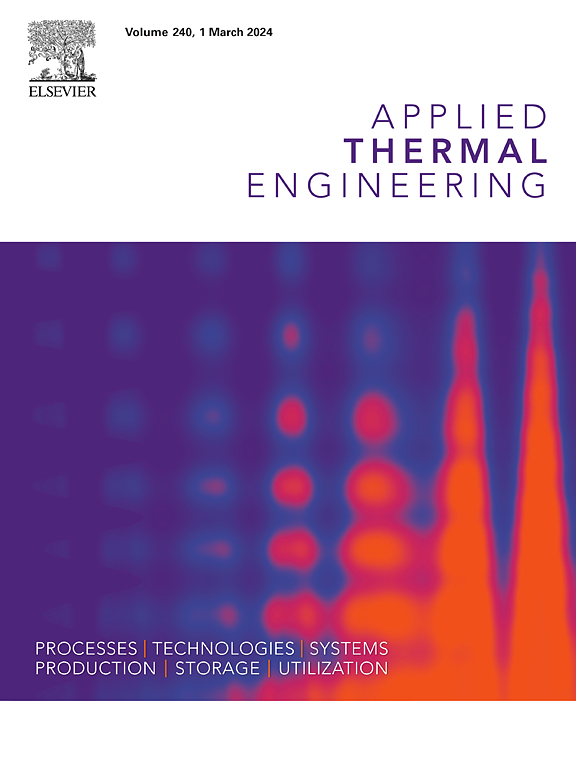Enhancing photovoltaic efficiency through PCM and piezoelectrically atomized cold-water mist cooling
IF 6.9
2区 工程技术
Q2 ENERGY & FUELS
引用次数: 0
Abstract
Cooling of photovoltaic panels is of great importance, because the high temperature of the panels reduces their energy conversion efficiency. The present research is devoted to investigating how much the efficiency of a phase change material (PCM) in reducing the temperature of a photovoltaic panel can be improved by using cold-water mist to cool the PCM placed under the photovoltaic panel. Ultrasonic piezoelectrics, positioned at the bottom of a cold-water tank, are used to produce the cold-water mist. The effects of water level (5, 6, and 7 mm), water temperature (5, 10, 15, 20, and 25 °C), and the number of piezoelectrics (1, 2, 3, 4, and 5) in the tank on the temperature, output voltage, and output power of the photovoltaic panel are investigated in a laboratory setting. It was found that the electrical performance of the photovoltaic panel improves with a lower water level, lower water temperature, and a higher number of piezoelectrics. In the optimal condition, the average temperature of the photovoltaic panel was 27.3 °C (46.41 %) lower than that of the panel without cooling, while the output voltage and output power of the panel were 47.22 % and 12.63 % higher, respectively, compared to the values without cooling.
通过PCM和压电雾化冷水雾冷却提高光伏效率
光伏板的冷却是非常重要的,因为面板的高温降低了它们的能量转换效率。目前的研究致力于通过使用冷水雾冷却放置在光伏板下的相变材料(PCM)来提高相变材料(PCM)在降低光伏板温度方面的效率。超声波压电,定位在一个冷水罐的底部,用来产生冷水雾。在实验室环境中,研究了水箱中水位(5、6和7毫米)、水温(5、10、15、20和25°C)和压电体数量(1、2、3、4和5)对光伏板的温度、输出电压和输出功率的影响。研究发现,在较低的水位、较低的水温和较高的压电体数量下,光伏板的电学性能得到改善。在最优条件下,光伏板的平均温度比未制冷时降低27.3℃(46.41%),输出电压和输出功率分别比未制冷时提高47.22%和12.63%。
本文章由计算机程序翻译,如有差异,请以英文原文为准。
求助全文
约1分钟内获得全文
求助全文
来源期刊

Applied Thermal Engineering
工程技术-工程:机械
CiteScore
11.30
自引率
15.60%
发文量
1474
审稿时长
57 days
期刊介绍:
Applied Thermal Engineering disseminates novel research related to the design, development and demonstration of components, devices, equipment, technologies and systems involving thermal processes for the production, storage, utilization and conservation of energy, with a focus on engineering application.
The journal publishes high-quality and high-impact Original Research Articles, Review Articles, Short Communications and Letters to the Editor on cutting-edge innovations in research, and recent advances or issues of interest to the thermal engineering community.
 求助内容:
求助内容: 应助结果提醒方式:
应助结果提醒方式:


